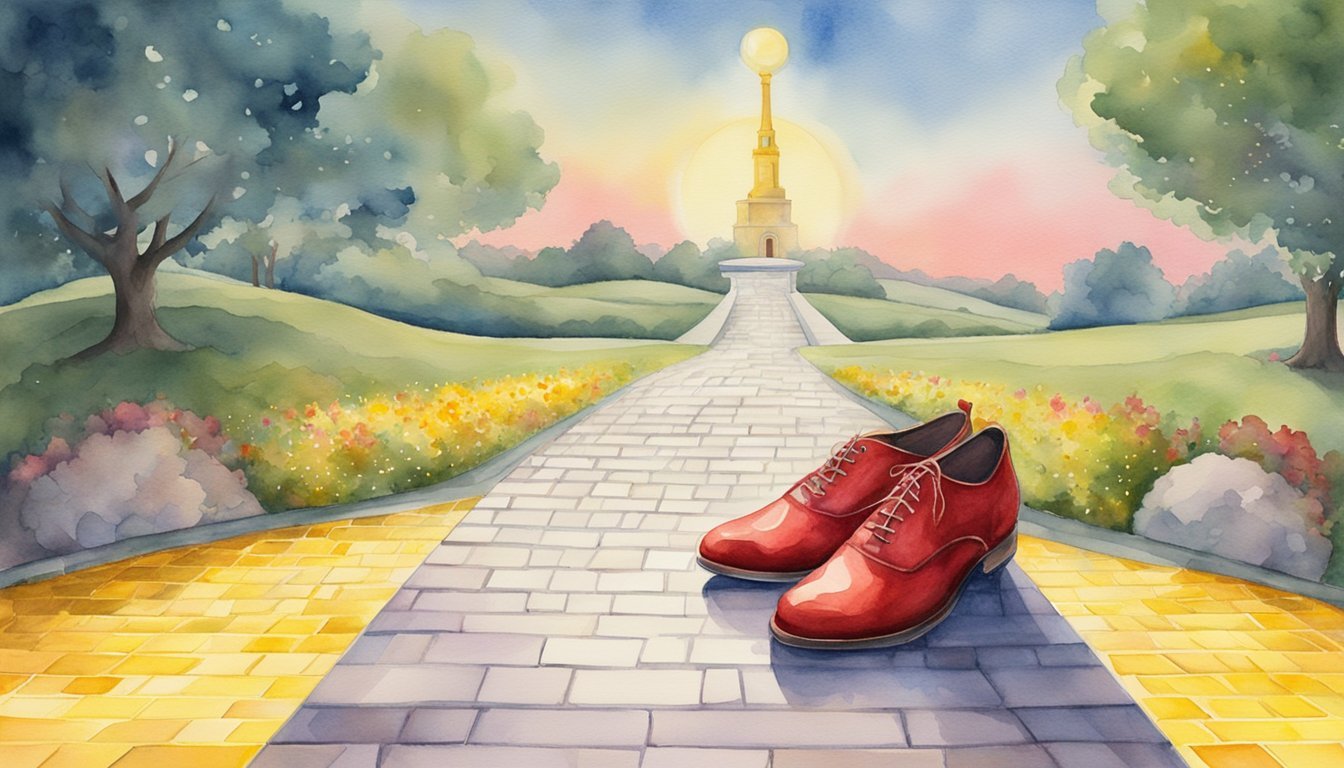The Origins and Legacy of Ruby Slippers

The ruby slippers are one of the most iconic artifacts in American entertainment history, with an enduring appeal that reflects their significant role in the arts and culture. These slippers represent more than just footwear in a film; they are a symbol of the American dream and imagination.
Cultural Impact and Symbolism
The ruby slippers are synonymous with the idea of hope and the power of belief. In the 1939 film The Wizard of Oz, Judy Garland, who played Dorothy Gale, clicked the slippers together to return home to Kansas, invoking the phrase, “There’s no place like home.” This moment has become a deeply ingrained slice of Americana, symbolizing the universal human desire for comfort, family, and belonging. Beyond the film, the slippers have become an emblem of the journey towards self-discovery and the quintessential American narrative of personal empowerment and triumph over adversity.
Design and Creation
Originally, L. Frank Baum, the author of the source novel, described Dorothy’s magical shoes as silver. However, for the technicolor glory of the silver screen, MGM costume designer Gilbert Adrian changed them to a shimmering red, adding to the visual spectacle of the yellow brick road and the vibrant land of Oz. The slippers were not just props but works of art, intricately handcrafted with sequins and beads, capturing the imagination of audiences and contributing to the grandeur of Hollywood’s Golden Age.
Judy Garland and Dorothy Gale
Judy Garland’s portrayal of Dorothy Gale has immortalized the ruby slippers. Her innocent and heartfelt performance resonated with viewers and created an emotional attachment to the slippers. As Dorothy journeyed from the grayscale reality of Kansas to the vibrant technicolor world of Oz, the slippers were her constant companion. They became as much a part of The Wizard of Oz lore as the tale itself, intertwined with Garland’s own legacy within American culture and the broader realm of entertainment history.
Preservation and Exhibits of Ruby Slippers
The iconic ruby slippers worn by Judy Garland in “The Wizard of Oz” have undergone significant conservation efforts to ensure their display and preservation for future generations. These efforts are testament to their cultural importance and the challenges of conserving such delicate Hollywood memorabilia.
Smithsonian Institution and Conservation
The Smithsonian’s National Museum of American History houses one of the few surviving pairs of Dorothy’s ruby slippers, attracting visitors from around the world. Understanding the need to preserve these artifacts, conservators at the Museum Conservation Institute conducted meticulous studies to stabilize and conserve the slippers. A Kickstarter campaign was also launched to fund a state-of-the-art display case designed to limit deterioration and protect the slippers from environmental factors.
Theft and Recovery
A dramatic chapter in the slippers’ history is their theft and subsequent recovery. In 2005, a pair was stolen from the Judy Garland Museum in Garland’s birthplace of Grand Rapids, Minnesota. The FBI agents, after a 13-year investigation, recovered the slippers in 2018 in Minnesota, underlining their significance and the lengths taken to return these pieces of cinematic history. Their recovery was a relief to fans and historians alike, affirming the slippers’ storied place in American culture.
Influence on Arts and Collections
The ruby slippers have not only inspired conservation efforts but have also left a lasting impact on arts and collections across the country. They have been part of major cultural exhibits, such as the Academy Museum of Motion Pictures, and have been referenced alongside other important pieces of Hollywood memorabilia like costumes from “Casablanca” and Marilyn Monroe’s dresses. These relics, including the slippers, underscore the intersection of film, history, and art, much like the collaborations between the Library of Congress and Hollywood figures such as Steven Spielberg in the pursuit of preserving cinematic history.

